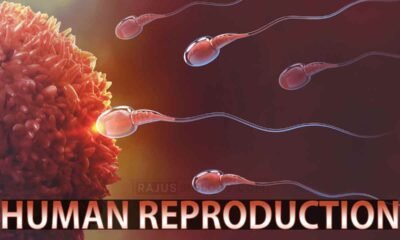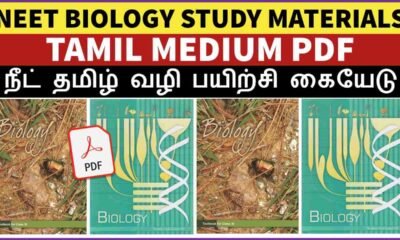Blog
Fungi: Definition, Characteristics and Examples (With Simple Diagram)
In this article we will discuss about fungi definition, characteristics, types and their examples.
- The fungi are achlorophyllous and heterotrophic thallophytes.
- They resemblance with algae and therefore, included in the group thallophyta because their plant body consists of a thallus.
- The study of fungi is known as Mycology (mykes = mushroom, logos= study)
- Scientists in this field are called Mycologist.
Fungi Characteristics
- They are cosmopolitan in distribution (found everywhere)
- They are heterotrophic in nature due to absence of chlorophyll. They may be parasite, saprophyte or symbionts.
- The fungal plant body may be unicellular (Synchytrium, Saccharomyces) or filamentous (mucor, Aspergillus).
- The filament is known as hypha (Plural: hyphae) and its network structure known as mycelium.
- The hyphae may be aseptate (without septa and many nuclei) or septate (Septa present and uni, bi or multinucleate)
- The septa usually have simple pores but Basidiomycetes have unique type of septum called the dolipore septum. The dolipore septum has a pore surrounded by cap-like proteinous membrane called parenthosome.
- The fungal cell surrounded by a distinct cell wall (Except slime molds).
- The main component of cell wall is fungal cellulose known as chitin. But in lower fungi (Oomycetes) the cell wall is composed of cellulose and glucon.
- They are entirely devoid of chlorophyll, but carotenoids are normally present.
- The fungal cells are haploid, dikaryotic or diploid. The diploid phase is ephemeral (short lived)
- In lower fungus Like Masticomycotina, the reproductive cells (zoospores and gametes) may be uni or biflagellate, having whiplash (Acronematic and smooth) and/or tinsel (Pantonematic and mastigonemes) type of flagella. But in higher fungi Like Zygomycotina, Ascomycotina, Basidomycotina and deuteromycotina are immotile i.e. motile cells do not occur in their life at any stage.
- Fungi store their food in the form of glycogen and oil bodies.
- In response to functional need, the fungal mycelia are modified into different types such as: prosenchyma, pseudoparenchyma, rhizomorph, sclerotium, appressorium, haustoria and stromata
- In unicellular fungus, the whole body converted into reproductive unit are known as holocarpic fungi (E.g., Synchytrium). However, in many others, only part of plant body is converted into reproductive units, thus they are called eucarpic fungi (E.g. Pythium, Phytophthora)
- Reproduction takes place by all three types: vegetative, asexual and sexual
- Vegetative reproduction takes place by fragmentation (E.g., Rhizopus, mucor), fission (E.g., Yeasts) and budding (E.g., Ustilago)
- Asexual reproduction takes place by different types of spores. Spores may be unicellular (E.g., Aspergillus) or multicellular (E.g., Alternaria), may be endogenous (E.g., Mucor) or exogenous (E.g., Aspergillus)
- Sexual reproduction takes place by fusion of gametes. It is occur in three phases: plasmogamy, karyogamy and meiosis
Fungi Examples
- Agaricus bisporus (Button Mushroom): A common edible mushroom.
- Saccharomyces cerevisiae (Baker’s Yeast): A single-celled fungus. Used for making bread and ferment beverages (beer, wine).
- Penicillium notatum (Penicillium): It is a type of mold. It produces penicillin, a lifesaving antibiotic.
- Amanita muscaria (Poisonous mushroom): A brightly colored, toxic mushroom. Red cap with white spots, secret hallucinogenic properties.
- Morchella esculenta (Morel): A high prized edible mushroom. Honeycomb-like cap, distinctive appearance.
- Armillaria mellea (Honey Fungus): A parasitic fungus that attacks trees. Grows in clusters at the base of trees, can cause significant damage to forests.

 Entertainment1 month ago
Entertainment1 month agoIbomma Bappam: Redefines Telugu Streaming Trend

 Blog1 month ago
Blog1 month ago[PPT] The living world Class 11 Notes

 Blog1 month ago
Blog1 month ago[PPT] Human Reproduction Class 12 Notes
- Blog1 month ago
Class 12 Biology Notes Chapter wise PPT

 Blog1 month ago
Blog1 month agoIosmirror.cc Apk: Enables Smart Screen Sharing
- Blog1 month ago
PG TRB Botany Study Material PDF Free Download

 Blog1 month ago
Blog1 month agoDownload NEET Biology Study Materials in Tamil
- Blog1 month ago
Class 11 Biology Notes Chapter wise PPT












